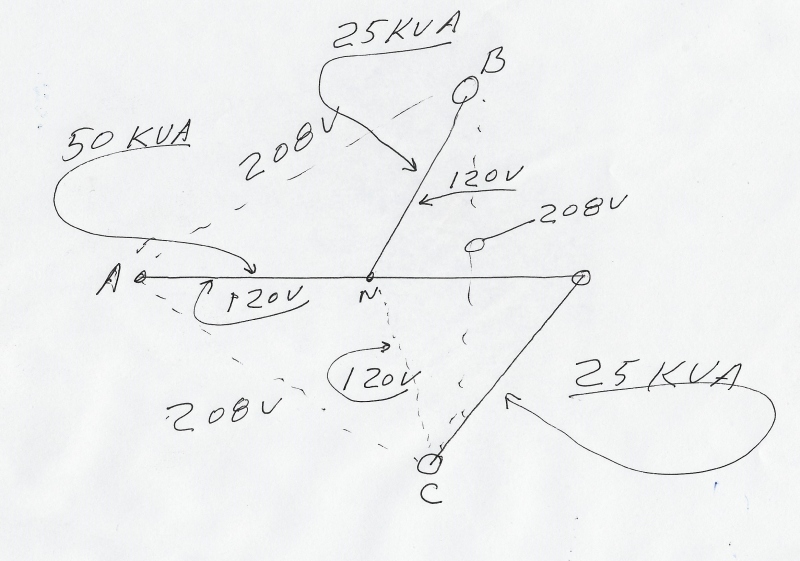"We" got rid of ours several years ago...but I remember them well. The conversion was bilateral 60 Hz to 25 Hz, but the principles are the same. The 60 Hz machines were of twelve-pole-set configuration, and the 25 Hz ones of five-pole-set design, leading to an operating speed of 300 rpm.
As a synchronous AC machine is loaded it develops either an angle of advance when generating or a retardation angle when motoring. If the frequency changer is operating alone, this is of little moment; but as soon as FCs are paralleled, load sharing can become an issue unless the angular displacements of the individual machines are properly aligned.
Some of our FCs could be started only from the 60 Hz end, others only from the 25 Hz end, and some could be started from either side. You can readily grasp that any synchronous AC machine having two or more sets of poles per phase can successfully "lock in" with the system at more than one location, and therefore if the incoming machine is being paralleled with another, when excitation is built on the idle end and the synchroscope selector engaged, the needle will typically settle at one of a number of possible angular displacements, depending on which poles of the machine have locked in.
If the synchroscope needle was not at or near the twelve o'clock position, pole slipping was commonly employed to drop the machine back one pole at a time until it was. If the angle of displacement was not too severe, the synchronizing breaker could then be closed and the machines in parallel would immediately begin sharing the load...although not necessarily equally, which is where the stator shift comes in: by physically rotating the stator of the machine or machines so equipped it was possible to exactly compensate for any existing angular displacement on a machine not so equipped so that the latter could be synchronized at exactly 0° phase angle. Once the incoming FC was tied to both systems, the stator shift on the machine so equipped could be adjusted as needed to achieve any desired load sharing setting desired.
Some machines, once brought up to speed and synchronized to the 60 Hz side could, with excitation in service on both machines, be disconnected momentarily from the 60 Hz side, at which point the machine speed would begin to drift down, whereupon the set could be synchronized with the 25 Hz system. If the 'scope was not at or near twelve o'clock it would not take more than four pole slips to get it there.
Hope this helps.
CR
"As iron sharpens iron, so one person sharpens another." [Proverbs 27:17, NIV]

